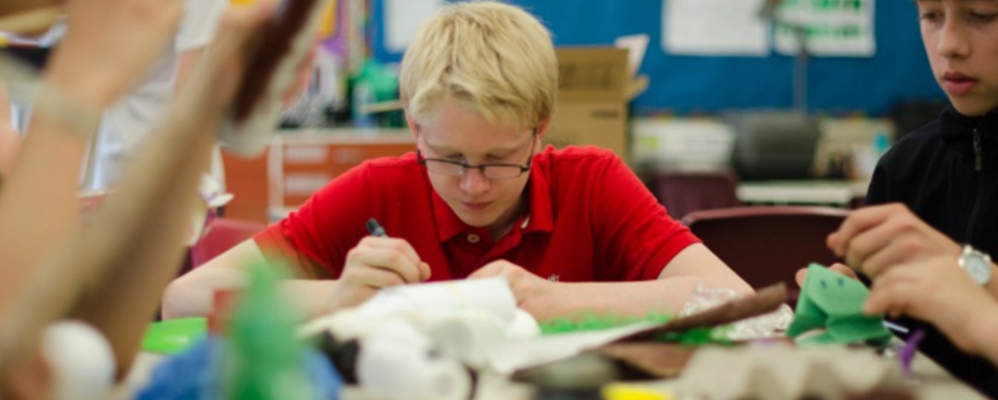Creative Learning


What do students learn from
creative learning?
Learning Story
As students engage in a variety of drawing, painting and sculpting activities they explore relationships, make compositional decisions and produce two- and three-dimensional works of art and multimedia forms.
Creativity is about expressing thoughts and feelings as well as thinking and problem-solving. Children use what they know to create original thoughts. Using their imagination helps children become better observers and innovative thinkers. Through the arts children represent their understanding of the world. They find out what different materials can do; different ways to express themselves with words – and without; how their own bodies move; the sounds they can make with their voices and instruments. Creativity enables us to deal with the unpredictability of the future – a future full of innovation and new technology.
We have just completed the reading of the novel Holes. The children really enjoyed the book and were able to make many connections. As a cumulative activity, I decided to offer students a variety of opportunities to respond to the book in their choice of media. We had been developing a reference list of creative ways of responding to text. As we approached this particular task, the students used the list to brainstorm ways of responding specifically to Holes. In this way, all students heard the suggestions of others and all were given time and opportunity to consider the way they would most like to respond.
Here are some of the ways the students chose to respond to Holes.
- Jay wrote a response journal from the viewpoint of the main character. His work demonstrated a deep understanding of the plot and how it relates to his character.
- Tershad took the role of one of the minor characters but was able to weave a more complex story from this viewpoint. He added details that might have been inferred or implied in the original text.
- A group of students decided to create a play based on a portion of the text. They wrote a script, developed props for the setting and performed their play for the class.
- Some students created posters that demonstrated a strong understanding of the details of the setting. They had to choose one key idea that portrayed the story in a way that would interest others.
- Other students made paintings, portraying characterizations of the protagonist and some of the minor characters as well. They were asked to discuss their paintings with the class and explain their choices in a way that would demonstrate their understanding of the story.
- Kianna and Emma created mandalas for main characters that demonstrated the key character traits. This was a complex activity but one that suited their learning styles.
- Gordie and Michelle wrote poems that retold key elements of the story and showed an understanding of the motivation of the characters.
All of these activities allowed the students to think creatively and intensely about the plot, the characters, the interplay between characters and their environment, and setting.
The students were highly engaged in this task as they were free to express themselves in a way that reflected their thinking and interests. Encouraged to make their own choices, elements of play were blended into this learning activity for increased discovery and enjoyment.



